Content [show]
Visual experiences in biology lessons help students learn more quickly and get the most out of the lesson. But besides, it is very interesting and exciting. Very often, teachers ask students to conduct laboratory work on growing mold and record each of its stages.

To properly grow the fungus at home, you need a minimum of costs and a maximum of patience. Although this process is not long, we all want to see the result faster.
What is mold
What is mold and where does it come from on bread. The subject of our study is nothing more than a fungus that takes root in a warm environment and grows on food and or in humid places.
There are two types of mold: toxic and non-toxic. The first is dangerous to health, and if accidentally swallowed or inhaled, it will cause nausea, vomiting, diarrhea, and in some cases can affect the nervous system and brain function. The second, on the contrary, is a remedy and is used in folk and traditional medicine.
The mold that we see on food in the refrigerator should not be eaten. If you accidentally bite off and swallow a spoiled product, take activated charcoal immediately and drink plenty of water.
Mold spores are carried by the air, and, getting into a favorable environment, they begin to actively multiply. They love damp wood, paper, glue, plaster, food. If the room where the spores have fallen is poorly ventilated, then it will be difficult to remove it.
how to get rid of mold odor
Mold growing methods
All that is needed for the active growth of fungi is moist air and nutrition. In our case, the food will be bread. There are several ways to do an experiment, but we will consider 2 of the simplest and most illustrative of them.

How to grow mold:
- Take a saucer, place a piece of paper or natural fabric on top of it and sprinkle with a few drops of water. Place a piece of bread on top (preferably white, so it will be easier to observe the mold). Cover the saucer with cling film or place it in a bag and tie. Add a few drops of water to your bread every day. After 3-4 days, first white and then green mold will appear.
- Take a glass jar and place the bread in it. Moisten it with water from a spray bottle and close the lid. Move the jar to a dark place and watch the result every day.
You can just put a piece of bread in a bag and tie it, but then it will be difficult to bring it to school without damaging the integrity of the mold.
Mold growing stages
When you start your experiment, remember to write down your observations on paper. It's even better if you manage to photograph them. As it grows, the mold will change color and volume, capturing all the new space:
- Stage one. 2-3 days after the start of the experiment, white specks will appear on the bread, so the mold begins to "assimilate" in the new territory.
- Stage two. The mold turns green. This happens 3-4 days after placing the bread under the bag. If earlier it appeared in separate areas, now they grow together. This means that all conditions are met correctly.
- Stage three. It is not necessary to bring bread to such a state, you can limit yourself to the first two stages.But if you want to see what happens next, then feel free to wait a few more days. During this time, the mold will turn into black spots, which will indicate that new spores are forming on it. This is an important stage in the life of fungi, on which it depends whether they will continue to multiply or not.
Since this type of mold is toxic, some safety rules must be followed. For example, if you open a bag or film, then do not breathe over the bread so that spores do not enter your body. It is better to put gloves on your hands while spraying, and then wash them thoroughly.
How to grow mold quickly
The entire process described takes 5 to 7 days. But what if you need to grow mold quickly, in a day or two. It is, of course, unlikely, but worth a try. Again, for the sake of experiment:
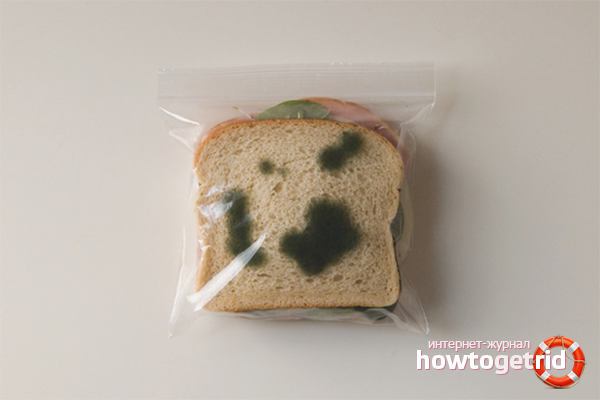
- Fungi love warmth, so place the bread over a radiator or somewhere above room temperature.
- If you have moldy cheese or spoiled food at home, place the already ripe fungus on the bread. They will take root pretty quickly, which will greatly speed up the process.
- Add milk instead of water; mold grows faster in this environment.
- In order for the fungus to grow quickly, remove it on purchased bread, preferably not the first freshness.
- Some young experimenters have noticed that mold grows quickly on unleavened, unsweetened bread.
But it's best not to leave your homework until the last moment, but to prepare it in advance.
how to get rid of mold in flower pots
Where else does mold grow
Such, at first glance, an unpleasant process like growing mold, in fact, turns out to be very exciting. You can expand the scope of your homework and try to develop the fungus on other foods:
- Vegetables or fruits. Mold grows on them in a completely different way, it looks more like mushrooms and has many different shades.
- If you want to amaze the teacher with the uniqueness, then make mashed potatoes from vegetables or fruits, add gelatin or agar-agar to it and place under a film. In this case, the mold will have an intricate pattern and an unusual color.
- Some go even further and add an antibiotic to the jelly so that bacteria don't grow in it and mold can grow unhindered. This will speed up the process and make your experiment unique.
Which type of mold growing will you choose. The simplest or most unusual. Around us every day there are many interesting events that you can watch and make amazing discoveries. In any case, do not forget to follow the process and write down useful conclusions.
Very often, biology departments in universities (and in a regular school as well) are asked a very unusual homework assignment - to grow mold on bread. And this is not done for fun. And for the effective study of students and for the sake of a biological experiment. That is why very often you can come across the question of how to grow mold on bread.
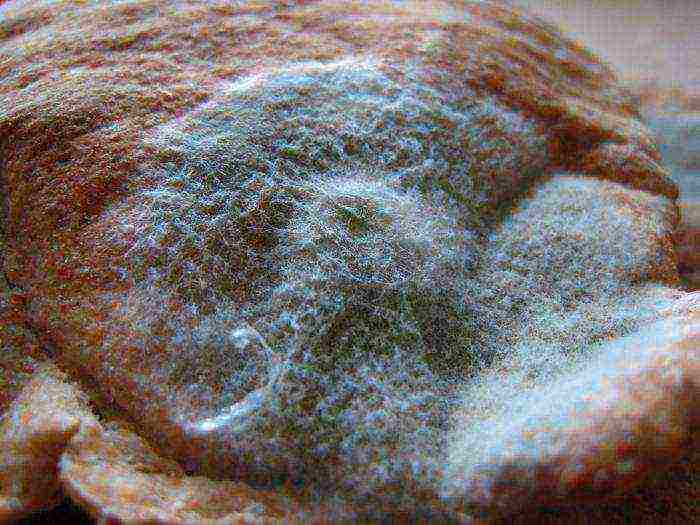
What is it?
Before you start solving the task, you need to clearly understand what you will have to work on. And for this you need to understand what mold is. First of all, it is a microscopic fungus. Many people think that mold is a bacterium. But the studies carried out have proved that this is still a mushroom, the fruit body of which is capable of developing in almost any nutrient medium. To grow mold, you can use not only bread, but other products as well. The main thing is to create optimal conditions for this. So how to make mold on bread in no time?
Types of mold
At the moment, several varieties of microscopic fungi are known. These include black, yellow and gray mold. Some of the species are considered beneficial, such as red, white, and blue. With the help of this mold, quite tasty cheeses are made. Moreover, such a product has many useful properties.First of all, such cheese contains protein, calcium and B vitamins. The use of such products has a positive effect on the state of the circulatory system, and also improves the functioning of the gastrointestinal tract. However, nursing and pregnant women should not eat moldy cheeses.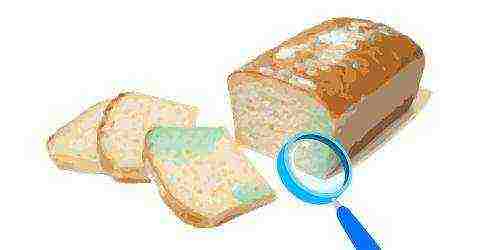
Why does mold occur?
In everyday life, a person is constantly faced with all kinds of mold on completely different products, as well as on things. A similar plaque is formed by a special type of fungus, the beneficial qualities of which a person has learned to use for good purposes. Some components are used in the manufacture of a certain group of medicines and products. It is worth noting that mold can grow in conditions that are optimal for humans. The presence of a nutrient medium is important for a microscopic fungus. And then the matter is behind the small.
Why exactly bread?
Mold on bread is a fairly common occurrence. Even the most scrupulous housewife, after a while, the product is affected by a similar fungus. And this is not an indicator of untidiness. In fact, for the development of a microscopic fungus, a nutrient medium that is rich in carbohydrates is needed, as well as warmth. Bread is an ideal product for mold growth. After all, it is rich in carbohydrates and is kept warm.
If there is no bread in the house, fruit and potatoes can be used to grow mold.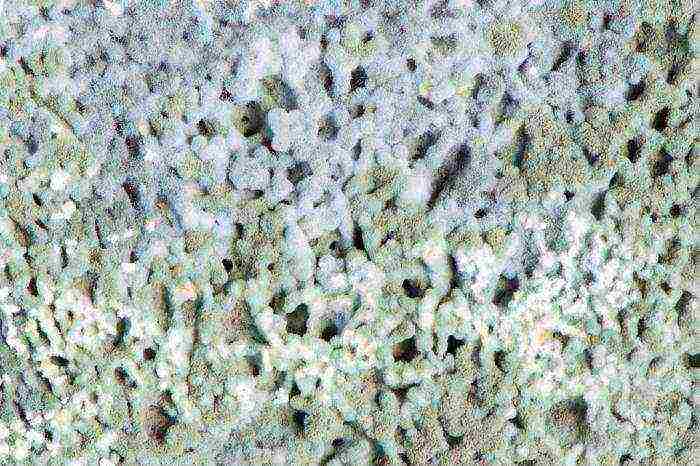
What should be the bread?
Since mold needs to be grown on bread quickly, it is worth preparing everything you need in advance. It is not necessary to buy fresh baked goods to create an optimal environment for microscopic fungus growth. Even an old piece of bread is ideal for this. At the same time, many experts argue that it is better to use white pastries for growing mold: a loaf or a bun.
To speed up the process, it is necessary to place the product in a moist and warm air. And to slow down the growth of a microscopic fungus, it is worth transferring a piece of bread to a dry and cold environment. The process itself consists of only a few stages.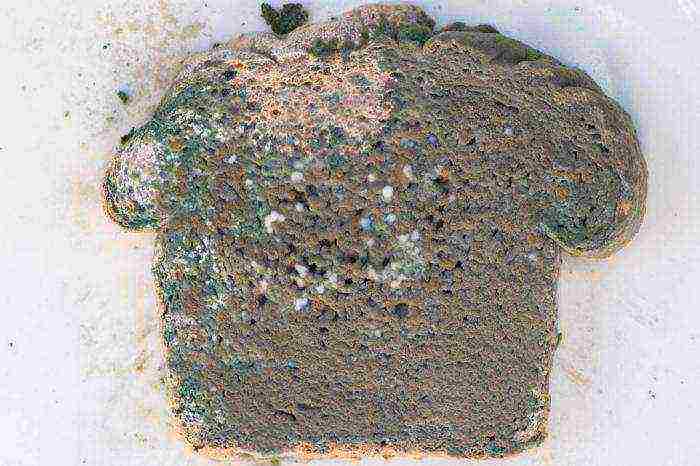
Stage one
Mold on bread, the photo of which can be seen below, appears a day later, if a piece of white bread is moistened a little in water, and then placed in a plastic bag. At the same time, do not tie it tightly. In this case, the packet must be transparent. Such a structure of the material will allow you to see if mold has appeared on the bread and what color it is.
First of all, the spores affect the crust of the flour product, and only later the crumb itself. If even a small crack appears on the bread, then it is from this place that the product will begin to mold, gradually moving to the inner area. In this part, the humidity is higher, the microscopic fungus spreads much faster.
Mold spores contribute to the early decomposition of the crumb. As a result, the bread loses its pleasant aroma and taste. The denser crust on the product prevents the fungus from entering. Probably many have noticed that bread sold in bags does not grow moldy for a very long time. The thing is that this product contains preservatives that prevent the fungus from developing. Therefore, you should not take such a product for an experiment.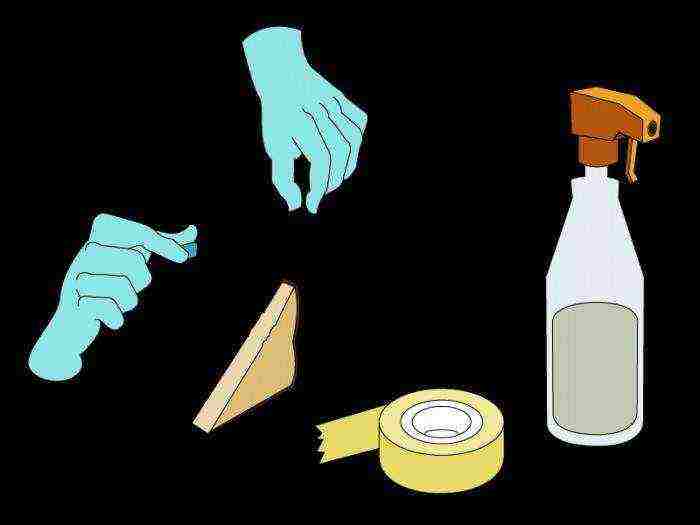
Stage two
Since it is very difficult to make mold on bread under intense light, the bag with the product should be placed in a dark place. The first spores of a microscopic fungus will appear within a day. However, it will be quite difficult to see them with the naked eye. Usually these are barely noticeable threads that are hidden between the pores of the bread.
After a few days, the mold on the bread will become more noticeable. Initially, a microscopic fungus will appear with almost invisible light spots. They will gradually darken and grow in size until the surface of the bread is hidden under a layer of mold.
The growth of the fungus does not end there.After a few more days, a green bloom will appear, which will gradually change its shade. As a result, black mold forms on the bread. A similar phenomenon indicates that the microscopic fungus in the created conditions feels great and decided to enlarge the colony with the help of its own spores.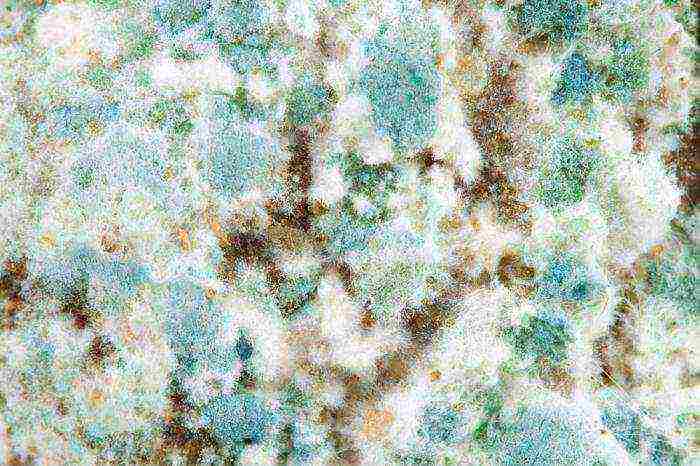
Can I eat foods with mold?
Even white mold on bread is poison. Any product with microscopic fungi should be discarded immediately. The most dangerous is yellow mold. It would seem a harmless fungus. But in fact, mold can cause the growth of cancerous growths.
Of course, blue cheese is an exception. In addition, the microscopic fungus in this case is specially prepared, and it is noble. However, eating regular cheese that is covered in mold is dangerous.
What if I ate a moldy food?
So, what if you accidentally ate moldy bread? Many are indifferent to this. But do not turn a blind eye to this. Of course, a person will not die from such an addition to the diet. But still it is considered poisoning. First of all, the liver suffers from this.
Usually, after eating moldy foods, doctors recommend drinking regular activated charcoal. The dosage of the drug depends on the weight. For every ten kilograms, you need to drink one tablet.
If a large amount of spoiled product has been eaten, then a weak solution of potassium permanganate should be drunk. This will cleanse your stomach. For safety net, it will not be superfluous to drink a course of the drug, which promotes the restoration of liver cells.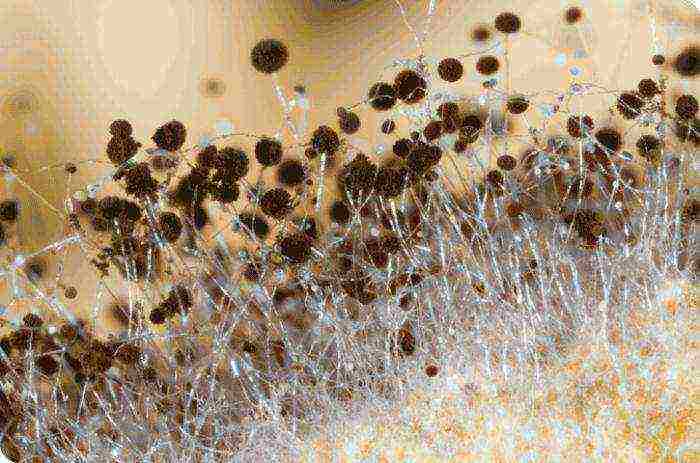
Finally
Mold on bread, the beauty of which is photographed under the microscope, is a sign that the product is environmentally friendly and suitable for consumption. It should be noted that such microscopic fungi do not multiply in a polluted environment. When carrying out the experiment, it should be borne in mind that ordinary unleavened bread becomes moldy much faster than sweet flour products. This is due to the fact that such products contain preservatives. Such components slow down the development of the fungus.
Do not forget that mold is harmful to our body. Scientists have found more than 100 toxic compounds in products coated with this fungus. Eating such foods can lead to serious problems. Toxins that enter the body may not appear for a long time. However, after several decades, they will be the main reason for the intensive growth of cancerous neoplasms. It should be noted that even heat treatment does not rid food of harmful compounds. Therefore, food covered with mold must be thrown away.
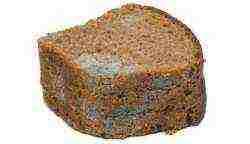
Usually, they try to get rid of mold and generally prevent its appearance in advance. But the thirst for knowledge can push young and mature naturalists to unexpected experiments. For example, for growing mold at home. Although most often such an idea does not come to them by itself, but is a practical assignment in biology, chemistry or other natural sciences. And then schoolchildren and students take up this experience, which, in general, is not at all difficult to realize. You just need to have the right materials and at least a basic understanding of the ongoing process.
Where is the mold on the bread Mold is a generalized name for many genera of fungi, the fruiting bodies of which can develop in almost any nutrient medium. In everyday life, we most often find mold fungi on finishing materials and food. For example, in the bathroom or on the leftovers of dinner thrown on the kitchen table until the morning. Some of them people have learned to subordinate to their needs and are used in the production of medicines (penicillin, streptomycin), products (Roquefort, Camembert, Brie) and drinks (sherry).Others have remained toxic pests, poisoning agricultural supplies and causing pathologies in the human body.
As for the "bread" mold, it is a direct specific "relative" of just penicillin fungi. For their reproduction, they choose warm, humid environments rich in carbohydrates. Therefore, fruits, potatoes and bread are ideal foods for mold growth. White, greenish, gray, pink or even black bloom quickly forms on them, depending on the type of fungus. Food spoilage can be prevented by proper storage and timely use before the expiration date. It is also important not to allow excessive humidity and ventilate the room, keep it clean - all this interferes with the development of mold. But in our case we will have to act just "by contradiction" and create optimal conditions in which molds will begin to multiply willingly.
Growing mold on breadLaboratory studies suggest the use of agar-agar as a nutrient medium for mold. But, since it is bread that is indicated in the conditions of our problem, we will use it. It is not necessary to go to the bakery for a special variety - any available in your home bread bin will do. Unless, for the sake of completeness of the experiment, you can take both a wheat loaf and a rye brick, and at the same time a bun, supplementing the set of exhibits with unleavened lavash. But this will practically not affect the course of the experiment, so let's just get down to business:
- Take a piece of bread, consisting of a crust and crumb, sprinkle with water and put in a whole plastic bag (it is better to choose a transparent one for this purpose, through which it will be easy to see all the changes). In principle, there is already enough moisture in the bread, but additional moisture will accelerate the development of mold. Tie the bag tightly and place in a dark place (a kitchen cabinet or plastic bread bin is ideal). Within a couple of days, you will notice the first signs of moldy bread. At first, these will be whitish and / or light gray spots on its surface, then they will become larger and gradually cover the entire surface of the product. Do not interrupt the experiment and wait a couple more days. The mold will turn green and then darken and eventually become completely black. This means that the fungi live so well and freely that they decided to increase their colony by forming microscopic capsules containing spores on the processes of the mycelium. As they mature, they open up and scatter mushroom spores around themselves, thereby "prolonging the genus" of the fungus. So, if mold in your experience has developed before this stage, then you can proudly consider yourself an experienced naturalist. Or, at least, pass the practical work with excellent marks.
- You can make it harder for yourself while making the experiment more descriptive. To do this, just like in the first case, take a piece of bread. Then wet a textile or thick paper towel, wring it out well (so that it is not wet, but only damp) and place on the bottom of a glass jar with a lid. Place bread on top of a napkin and close tightly. The presence of damp tissue will accelerate the development of mold, and the glass walls of the jar will allow you to observe this process. Most likely, visible changes will occur not earlier than on the second or even the third day of the experiment. But then events will develop faster. Mold spores grow and grow in size, change color (from white-gray to greenish-yellow). Gradually, it will cover the entire piece of bread and turn black.
Please note that it is easier to observe the process of mildew in white bread, because on its surface, the colored spots of fungi stand out more contrast and are therefore noticeable immediately after appearance. If you want to speed up the experiment, provide humidity and warmth, if you slow down, then vice versa.All this can be described as an accompanying text to the practical task, which will definitely have a positive effect on its assessment.
Interestingly, factory bread brought from the store molds faster than homemade bread baked in a bread maker or oven. It is not difficult to check this, but it can be explained by several reasons. But the most likely of these is mold contamination of bread during production in the factory workshop or during transportation. In other words, the microflora of industrial food products does not always comply with sanitary standards.
By the way, unleavened bread grows moldy faster than buns and other sweet pastries. Perhaps it's all about the preservatives and flavorings added to the confectionery. But the fact remains: molds are reluctant to use them as a nutrient medium. We hope that this information will be sufficient to develop basic research skills and gain valuable practical experience. In everyday life, it can be useful in order to build on the information received, correctly store and eat only fresh, mold-free products.
Mold appeared on our planet 200 million years ago. And it is still indestructible, since it has not been fully studied. Maybe that's why many of us try not only to get rid of it at the first suspicion, but also to grow it ourselves as an experiment. Often, such an undertaking is a practical assignment in a natural science discipline, for example, in biology. So let's figure out how to grow mold at home and figure out the process that is going on.
Where does mold come from? The smallest spores of fungi are present in the air around us along with dust and are carried by the wind. We do not notice them, since they are invisible to humans. Fruit bodies thrive in any suitable nutrient medium. But most often these are mushrooms on finishing materials in rooms with high humidity - a bathroom. In addition, mold grows on food products - for example, on crumbs left over from dinner that were not cleaned from the table in time. Some scientists subdued the pests, making on their basis such medicines as penicillin, streptomycin, as well as camembert cheeses, Roquefort, and sherry drink. But for the most part, these colonies are toxic and provoking pathologies in the human body.
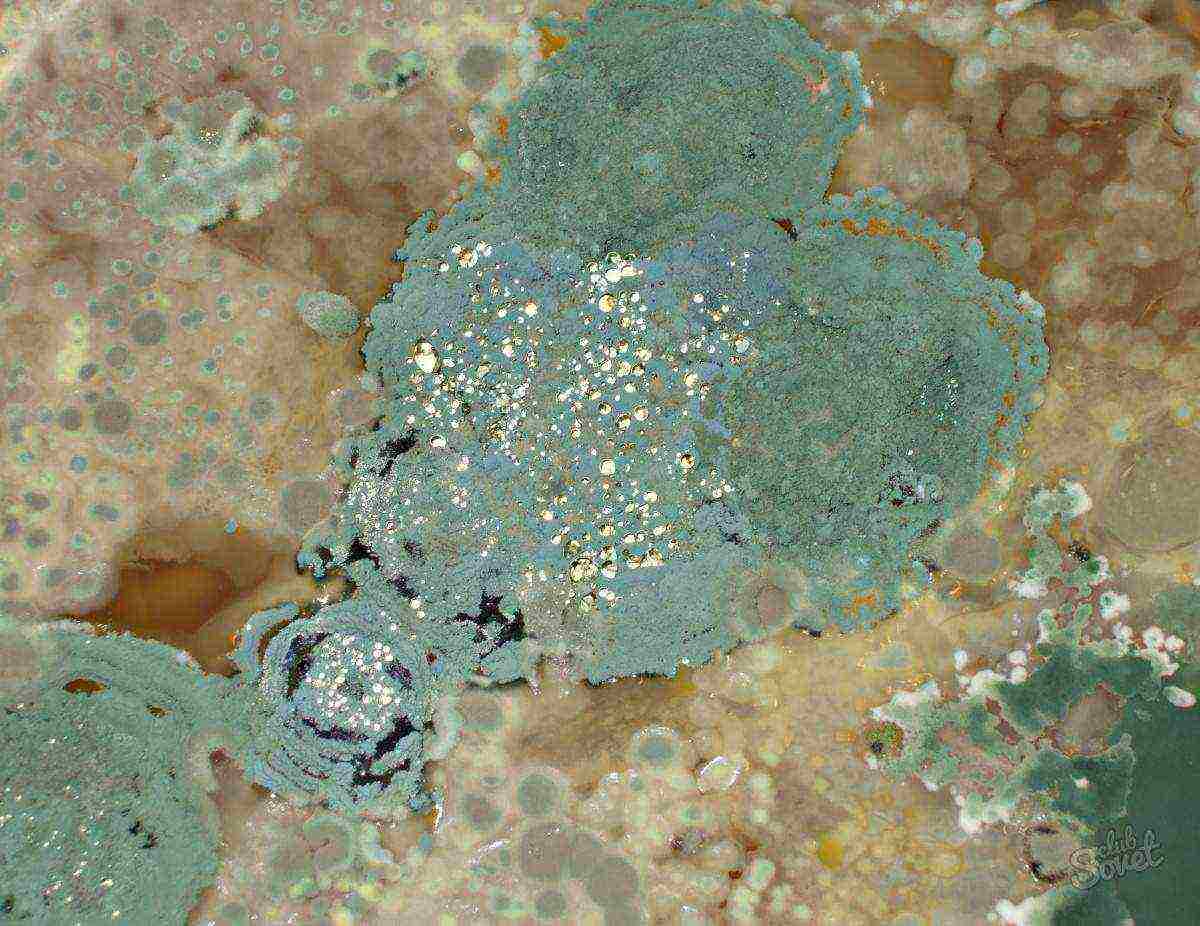
Most often, we find bread mold in the form of a multi-colored coating - white, gray, pink, greenish or black. It is the easiest way to grow it. In order for a relative of penicillin fungi to begin to develop willingly, we will create favorable conditions for her: a warm, humid environment rich in carbon, poor air flow. It is not necessary to look for a special type of bread for cultivation, mold grows well on any flour products - a rye brick, and a wheat loaf, and a bun, and unleavened lavash will do. But it is more convenient to observe the development of the mushroom on white bread, so it will stand out more contrast. Note that a store-bought product becomes moldy faster than a homemade product. Most likely because it is already initially infected with spores at the plant. But sweet pastries are covered with colonies more slowly, this is due to preservatives and flavorings.
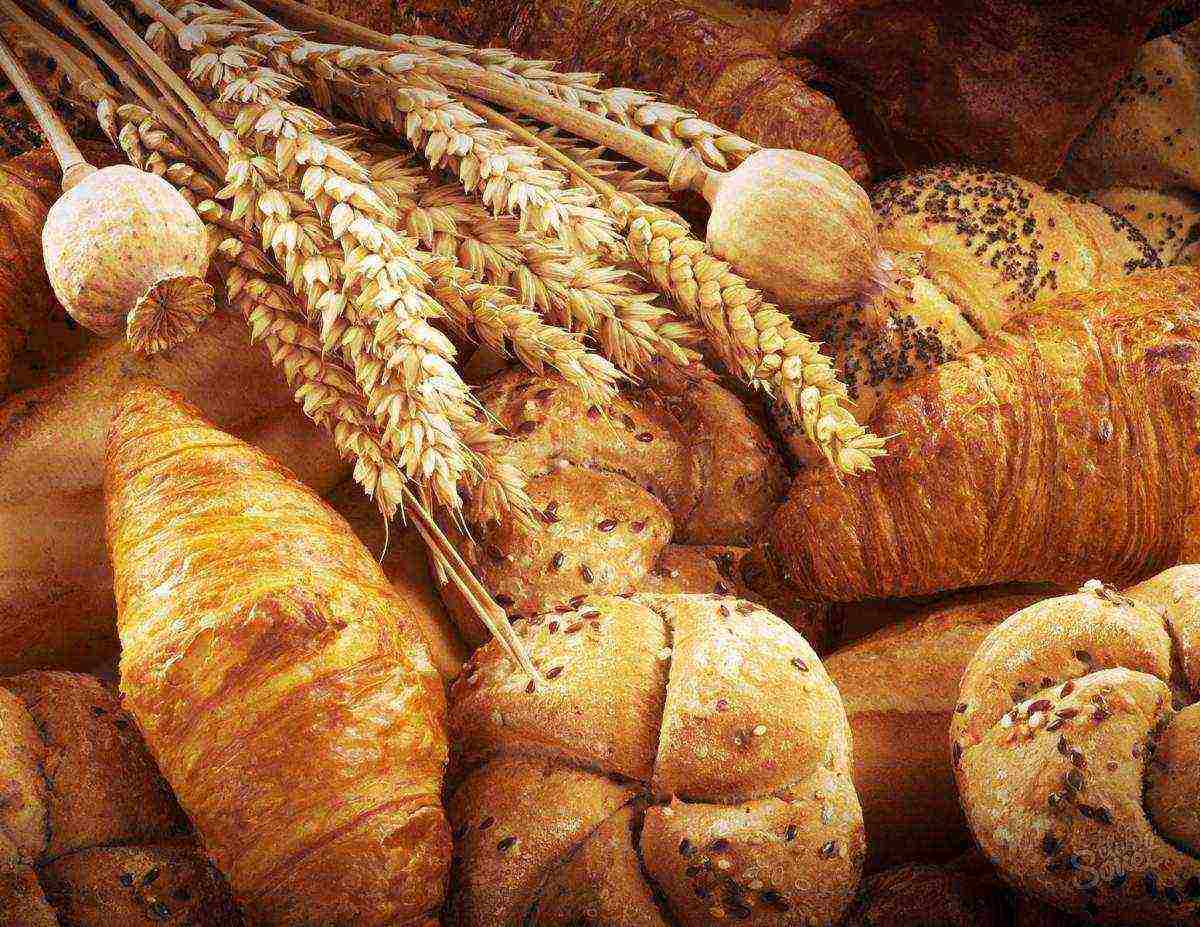
Take a piece of bread that is in the bread bin. Although there is enough moisture in this product, spray with water. Then you need to put it in a plastic bag. Take a transparent one so you can watch the changes through it. Alternatively, you can use a jar for your experience. To speed up the process, place a damp paper towel under the bread, to slow down - there should be less water. The bag should be tied well, the jar should be closed with a lid and sent to a dark place. The same bread bin or kitchen cabinet is perfect.
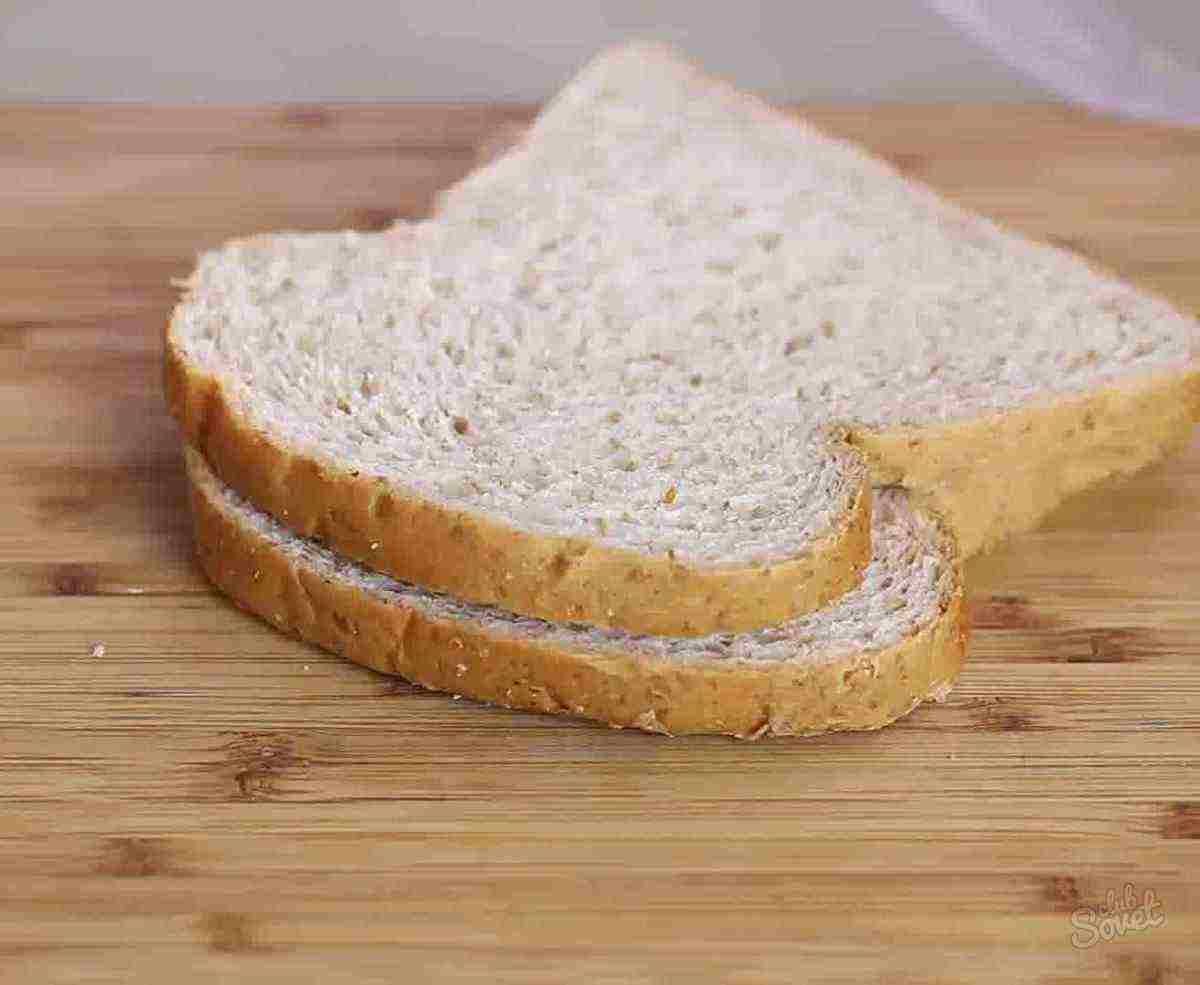
The first signs of the development of the fungus are noticeable after a few days. At first, you will see whitish spots or plaque that is light gray in color. Gradually, the mold will cover the entire crust. In another couple of days, it will turn green. If you wait a little longer, it will acquire a black color.
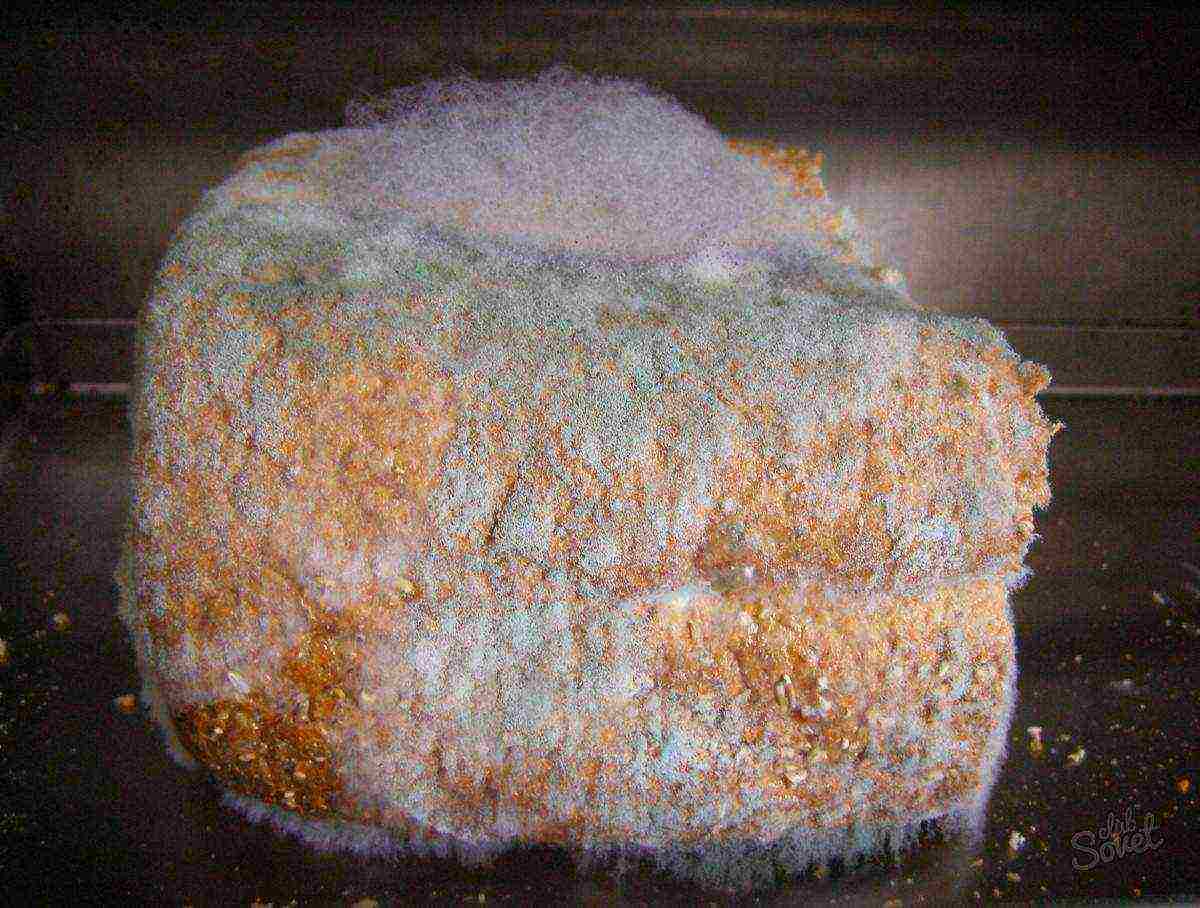
In addition to growing molds on bread, there are other methods:
- Using agar agar. Cut raw potatoes into cubes, do not peel them. It must be boiled over low heat for half an hour. Strain the broth, add agar-agar to it and send it back to the fire. When the substance dissolves, a mildew-friendly environment will be created. To speed up, you can add it from another product.
- On conservation. You've probably noticed mold bloom often in jars of jam, tomato paste, pickled tomatoes or pickles. To breed mold, just stir the contents with a dirty spoon and close the jar tightly with a lid. The result will not be long in coming.
- With the help of cheese. You will need a vegetative body of the fungus called mycelium. A slice of blue cheese is perfect. To create favorable conditions, pour sour cream over it and leave it at room temperature for a while.
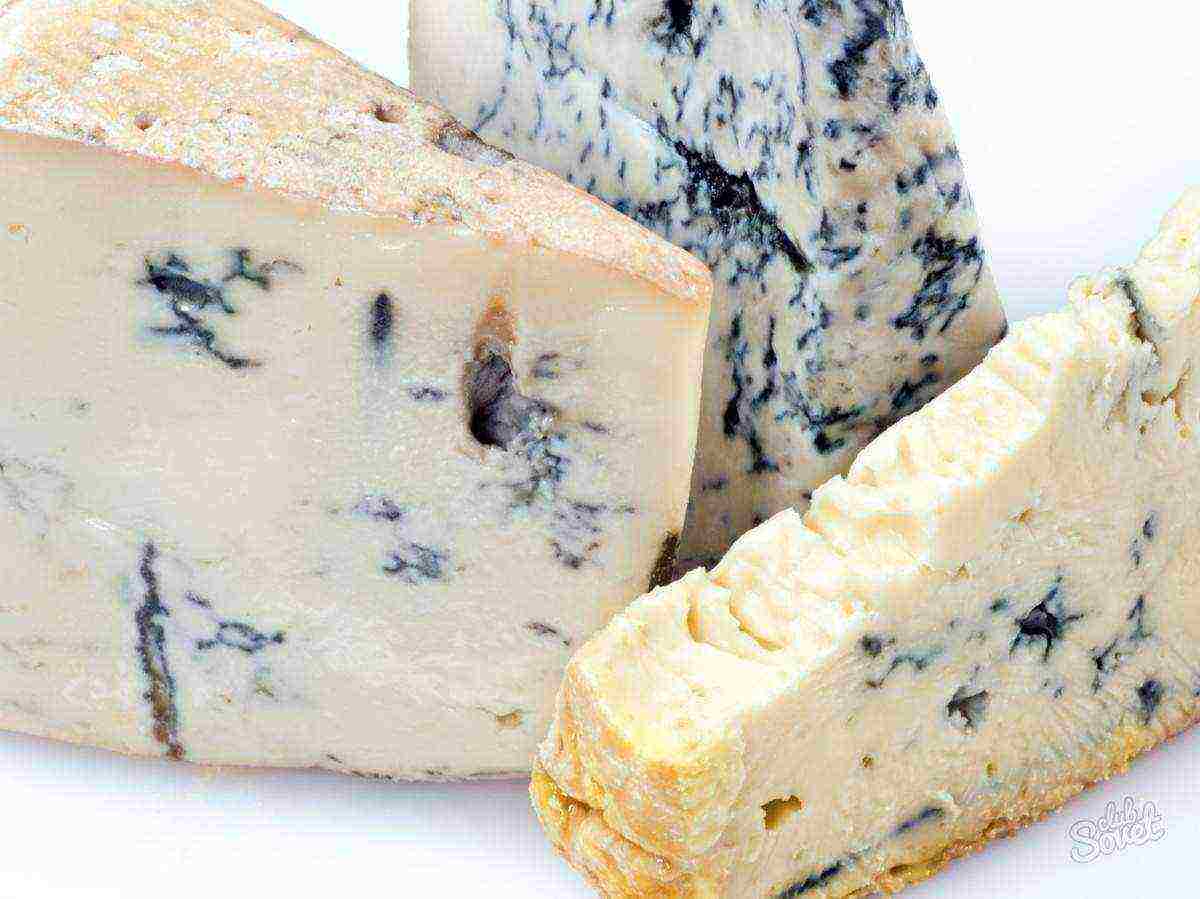
Now you know how to grow mold. And in order to prevent its appearance, and with it the deterioration of products, they must be properly stored and used in a timely manner, until the expiration date has expired. Ventilate the room regularly to avoid excessive moisture. Also, always keep your kitchen clean.


